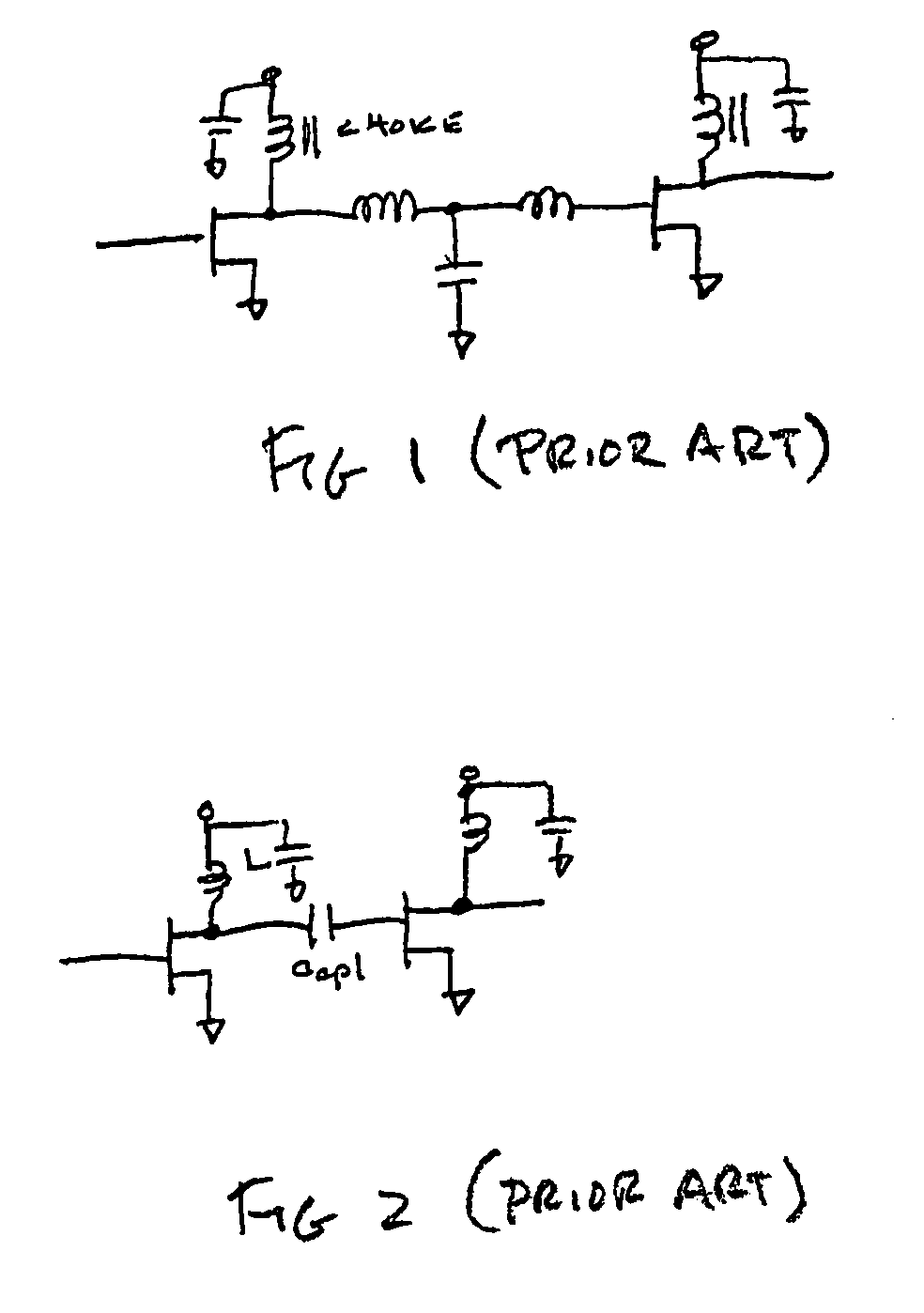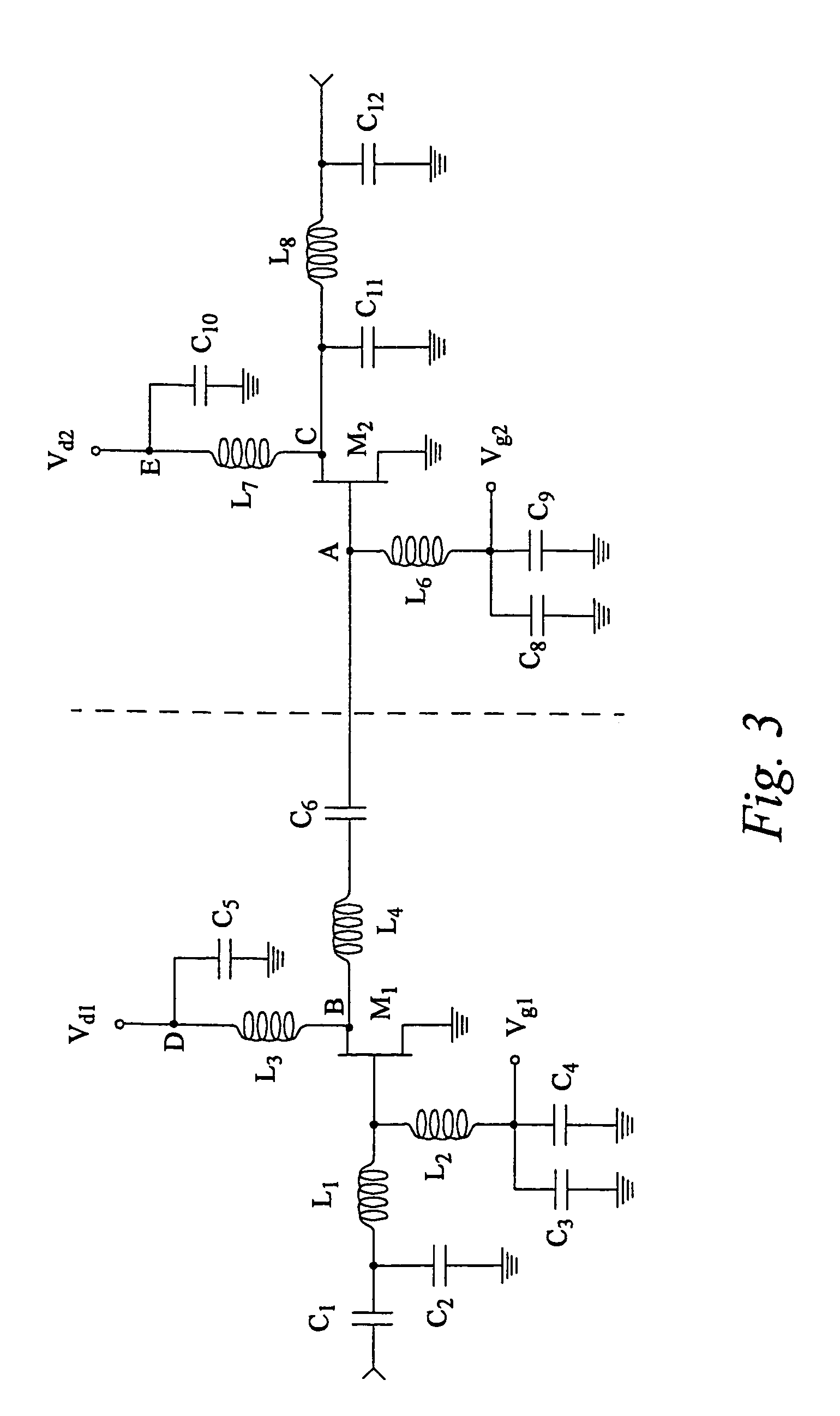RF power amplifier having high power-added efficiency
a power amplifier and efficiency technology, applied in the direction of single-ended push-pull amplifiers, modulation, gain control, etc., can solve the problem of not being able to develop only a voltage waveform or a current waveform in a passband (resonant) network, and achieve high output power, high efficiency, and high pae
- Summary
- Abstract
- Description
- Claims
- Application Information
AI Technical Summary
Benefits of technology
Problems solved by technology
Method used
Image
Examples
Embodiment Construction
[0021]Referring now to FIG. 3, a schematic diagram is shown of an RF power amplifier circuit in accordance with an exemplary embodiment. An input matching circuit composed of a coupling capacitor C1, a capacitor C2 and an inductor L1 is used to set the input impedance of the circuit. A driver stage M1 and a final stage M2 are shown as FETs, although in other embodiments bipolar transistors may be used. The drain electrode of the FET M1 is coupled to a supply voltage Vd1 through a drain bias network including an RF choke L3 and a capacitor C5. Similarly, the drain electrode of the FET M2 is coupled to a supply voltage Vd2 through a drain bias network including an RF choke L7 and a capacitor C10.
[0022]Respective gate bias networks are provided for the stages M1 and M2. In the case of the stage M1, the gate bias network is composed of an inductor L2, a capacitor C3 and a capacitor C4 connected at a common node to a voltage Vg1. In the case of the stage M2, the gate bias network is comp...
PUM
 Login to View More
Login to View More Abstract
Description
Claims
Application Information
 Login to View More
Login to View More - R&D
- Intellectual Property
- Life Sciences
- Materials
- Tech Scout
- Unparalleled Data Quality
- Higher Quality Content
- 60% Fewer Hallucinations
Browse by: Latest US Patents, China's latest patents, Technical Efficacy Thesaurus, Application Domain, Technology Topic, Popular Technical Reports.
© 2025 PatSnap. All rights reserved.Legal|Privacy policy|Modern Slavery Act Transparency Statement|Sitemap|About US| Contact US: help@patsnap.com



